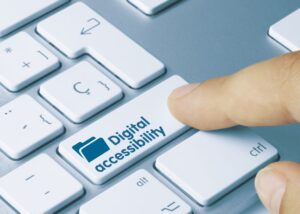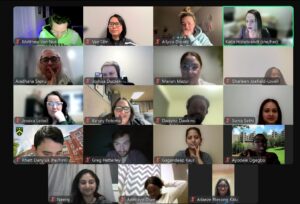I have received some invaluable feedback, which I will consider to ensure my prototype and second module are clearer and easier to navigate.
Here is the feedback I received:
1. Course access issue: When sharing the link of the course, I was supposed to create an enrollment link. Thus, the course could not open properly. To rectify this, I need to go to my Canvas course account, get into the Settings and find the self-enroll URL to share with my reviewers. By doing this, I also learned that there are two ways to self-enroll: a direct link or a sign-up link with a join code. I found it is easier to enroll with the direct link, so I sent my two reviewers the direct link.
2. Need to provide proper instructions on the class times in the module: In my module and my course announcement, I did not include any class times. This is another mistake, as in reality, I only include class times or meeting schedules at the beginning of the semester after the registration period is over and when I have received my official class schedule. However, I appreciate this feedback and will place a class schedule in the prototype.
3. The course may be complex for some of the targeted audience: Regarding this feedback, I am not quite sure how to modify it, as I had included module descriptions with clear instructions. However, I will reorganize the module and add clearer instructions to ensure that they are easy to use for all learners. This comment aligns with the article I just read, “Teaching in a Digital Age” In the article, the author mentioned that we need to give clearer guidance and support to first and second-year students, as they are transitioning from high school. Sometimes, I have placed them all at the same level and had high expectations for all students, even those in their first year. Therefore, I need to be more thoughtful and considerate when planning my lessons, according to their level.
For accessibility and equity in the context of my course, as I previously mentioned, due to my inexperience, the given link was incorrect, so the reviewers could not access my course. Even though the issue was resolved, it did make me understand that I should be more caution going forward. In reality, I may not be the one who sends the class link to my students, but the accessibility of it plays an important role, as it might affect my professionalism and the university’s. When I design my modules, I also asked myself the similar questions that can be found in the “Teaching in a Digital Age” article:
• What abilities will students require to complete the course’s online component?
• Is there too much stuff to master in such a short period of time, or are the learning materials I have been given hard to understand?
Even though I am fortunate enough to teach in a big city with easy access to the internet and great support tools, “it is important to offer a range of options for student learning within the same course.” [Teaching in a digital age]. Based on what I have learned in this class and the inclusive education class, I need to make sure that I incorporate a variety of teaching methods, such as visual aids, interactive activities, and hands-on projects, that can cater to different learning styles. Additionally, offering flexible deadlines and personalized feedback can help address individual learning needs and pace.
In this digital age, access to digital resources conveniently is essential for creating an inclusive learning environment where every student can thrive. Without proper accessibility, students from disadvantaged backgrounds may fall behind, widening the educational gap. That is why it is crucial for educators to ensure equitable access to digital tools empowers all learners.



